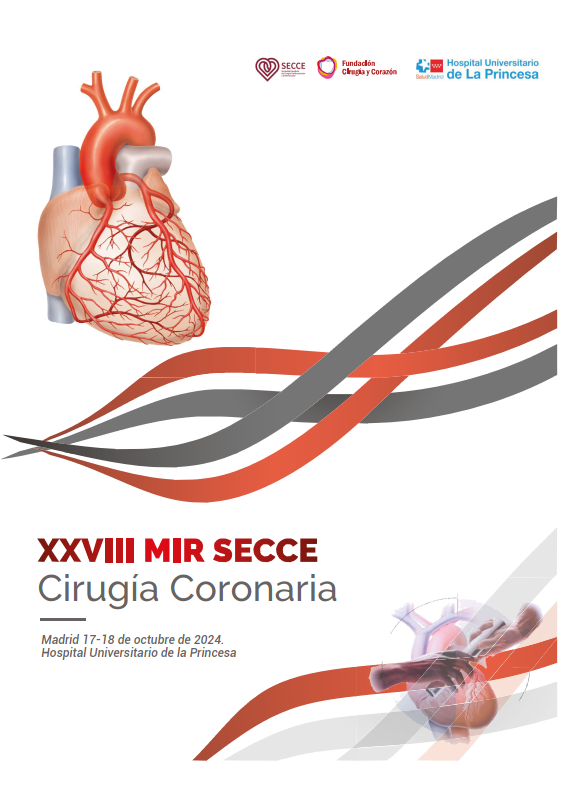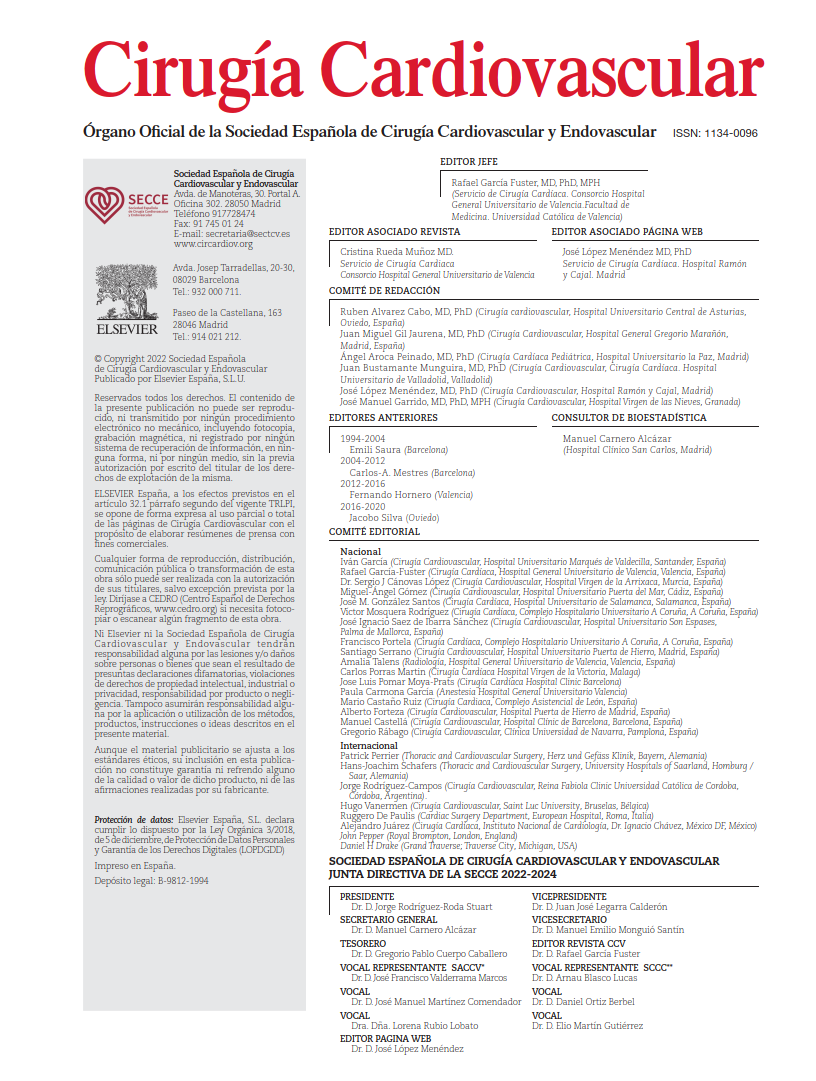Pulmonary atresia with intact ventricular septum (PAIVS) is a rare congenital defect characterized by membranous or muscular atresia of the right ventricular outflow tract (RVOT), accompanied by varying degrees of hypoplasia of the right ventricle (RV) and the tricuspid valve (TV). In the absence of a ventricular septal defect, systemic venous return must reach the systemic ventricle through a right-to-left communication at another level to maintain effective cardiac output. The size of the RV, the RVOT, the TV, and particularly the presence of right ventricle–dependent coronary circulation (RVDCC) are key determinants in the clinical management of these patients. Therapeutic options are guided by both clinical status and anatomy, ranging from biventricular repair to single-ventricle palliation or even cardiac transplantation. Reported 10-year survival rates range from 60% to 80%, depending on the series.
Coronary anomalies are present in approximately 90% of patients with PAIVS. In up to two-thirds of cases, persistent fetal sinusoids between the hypertensive RV and the coronary arterial bed are observed. The term RVDCC applies when at least one of the following criteria is met:
- Coronary fistulae are present along with severe stenosis in at least two of the three major coronary arteries, or there is atresia of the aortic ostium of a coronary artery.
- Coronary fistulae coexist with a stenosis and a significant portion of the RV myocardium is perfused from the RV cavity.
- Myocardial ischemia is documented at any point during the postnatal period.
Given the critical prognostic value of RVDCC, detailed coronary assessment via cardiac catheterization is mandatory. It is essential to localize sites of stenosis rather than merely report the number of coronary arteries involved. Based on this principle, the evaluation and management of these patients are summarized in the following recommendations:
1) Prenatal stage
1.1 Serial fetal echocardiography should be performed in patients with PAIVS to monitor disease progression and RV development. These parameters may assist in determining the feasibility of a biventricular repair versus single-ventricle palliation postnatally (I-B).
The severity of PAIVS may evolve during gestation. The TV annulus size is a strong predictor of postnatal management strategy, with a z-score of −3 as a commonly cited threshold. Evaluation of RV size, morphology (bipartite or tripartite), and comparison with the left heart are useful co-variables in clinical decision-making.
1.2 Genetic testing should be considered in patients diagnosed with PAIVS (IIa-C).
Although no specific genetic or chromosomal syndromes are consistently associated with PAIVS, there is a recurrence risk of RVOT obstructive lesions in future pregnancies.
1.3 As PAIVS is a ductal-dependent lesion, delivery should be planned in centers capable of initiating prostaglandin therapy and ensuring early referral to congenital heart disease centers (I-C).
Neonates generally remain stable during the first hours after birth due to spontaneous ductal patency for 24–72 hours. In the presence of fetal cardiac dysfunction or suspected RVDCC, perinatal care in a specialized center is critical.
In highly selected cases, in utero pulmonary valvuloplasty guided by ultrasound may be considered in fetuses with membranous PAIVS.
2) Evaluation of patients with PAIVS
2.1 A multidisciplinary evaluation is essential to define both anatomical and physiological characteristics for optimal management, recognizing the wide variability in RV morphology and coronary anatomy (I-B).
Given the complex and variable anatomy of PAIVS, multiple therapeutic pathways are available, and significant heterogeneity exists among centers. Morphological assessment is crucial in selecting the most appropriate strategy.
2.2 Echocardiographic evaluation should include assessment of RV size and morphology, TV size and function, interatrial communication, ductal insertion, pulmonary artery (PA) anatomy, and coronary pattern (I-B).
Determining the presence of RVDCC is the single most important factor in guiding initial therapy. Echocardiography alone is insufficient for coronary evaluation, and cardiac catheterization is required.
A TV z-score <-2.8 indicates the need for a systemic-to-PA shunt to ensure adequate pulmonary blood flow. In approximately 25% of patients, the ductus inserts ipsilaterally into a branch PA, increasing the risk of branch PA stenosis upon ductal closure.
2.3 Cardiac catheterization should be considered the gold standard for evaluating RVDCC and ischemic risk. In high-volume centers, computed tomography (CT) may be used for screening and identification of key anatomical features (IIb-B).
Between 9% and 30% of patients have critical obstructive coronary lesions. The catheterization study includes right ventriculography, balloon occlusion aortography, and selective coronary injections. CT offers a non-invasive alternative but requires ultrafast protocols for coronary assessment. Data are limited, and CT has not yet replaced angiography in this setting.
3) Clinical scenarios
3.1 In neonates with favorable morphology (membranous atresia, tripartite RV, TV annulus z-score >−2) and no RVDCC, RV decompression is recommended (I-B). The choice between surgical and percutaneous techniques should be individualized based on anatomy and center experience (IIb-C).
3.2 In neonates with PAIVS and no RVDCC, RV decompression along with a systemic-to-PA shunt or ductal stent—or both—may be reasonable depending on the type of atresia, TV morphology, RV morphology, and size (IIa-B).
Modulating the atrial septal defect may promote antegrade flow through the TV.
3.3 In neonates with less favorable morphology (muscular atresia, bipartite RV, TV annulus z-score <−3), RV decompression may be considered to promote RV growth in the absence of RVDCC (IIb-C).
The choice of surgical versus catheter-based decompression depends on specific patient characteristics and institutional expertise (IIb-C).
The surgical technique involves a ventriculotomy and transannular patch, often combined with resection of muscular bands to enlarge the RV cavity.
3.4 A surgical shunt or ductal stenting are both reasonable strategies to augment pulmonary blood flow (IIa-C).
3.5 In patients with PAIVS and no RVDCC who are not candidates for biventricular repair due to morphology or physiology, a 1.5-ventricle strategy may be considered (IIb-C).
This strategy involves a bidirectional Glenn. It is infrequently employed, and there are no universally accepted criteria for RV or TV size thresholds. Its long-term benefits over single-ventricle palliation remain unclear.
3.6 In patients with PAIVS and no RVDCC, RV myectomy may increase diastolic volume and improve TV mobility, potentially facilitating biventricular or 1.5-ventricle repair (IIb-B).
3.7 RV decompression should not be performed in patients with RVDCC (III-B).
Mortality is directly related to the amount of myocardium at risk—specifically the region perfused distal to the stenosis and the presence of other obstructed vessels that limit collateralization.
3.8 In patients with PAIVS and RVDCC, single-ventricle palliation or heart transplantation are reasonable options, depending on coronary anatomy and institutional experience (IIa-B).
3.9 In patients with PAIVS and evidence of myocardial ischemia or cardiac arrest, mechanical circulatory support may be considered as a bridge to recovery, transplantation, or decision (IIb-C).
Cardiopulmonary bypass may exacerbate ischemia due to RV preload depletion during open-circuit volume shift. In contrast, extracorporeal membrane oxygenation (ECMO) or other VADs preserve preload and reduce oxygen demand, thus improving coronary perfusion. An exception includes cases of bilateral coronary atresia, where no systemic coronary perfusion is possible.
4) Follow-up of patients with PAIVS
4.1 Follow-up in specialized centers is recommended to monitor long-term risks and complications (IIa-C).
Patients managed through single-ventricle palliation are exposed to the full spectrum of risks associated with the Fontan circulation, including potential ischemic events due to RVDCC. In those who underwent biventricular or 1.5-ventricle repair, progressive elevation in inferior vena cava pressure may occur over time, particularly in the presence of a noncompliant RV.
COMMENTARY:
The AATS has undertaken an outstanding effort to compile and synthesize the existing evidence on the diagnosis and management of PAIVS. We encourage all colleagues caring for these complex patients to carefully review the full guideline document, which is significantly more comprehensive than the summary offered in this blog entry.
REFERENCE:
Jaggers J, Winlaw D, Fuller S, Sethi N, Kochilas L, Adachi I, et al. 2025 American Association for Thoracic Surgery Congenital Cardiac Surgery Working Group- Expert consensus document on the management of patients with pulmonary atresia with intact ventricular septum. J Thorac Cardiovasc Surg. 2025 May 2:S0022-5223(25)00286-7. doi: 10.1016/j.jtcvs.2025.03.034.



